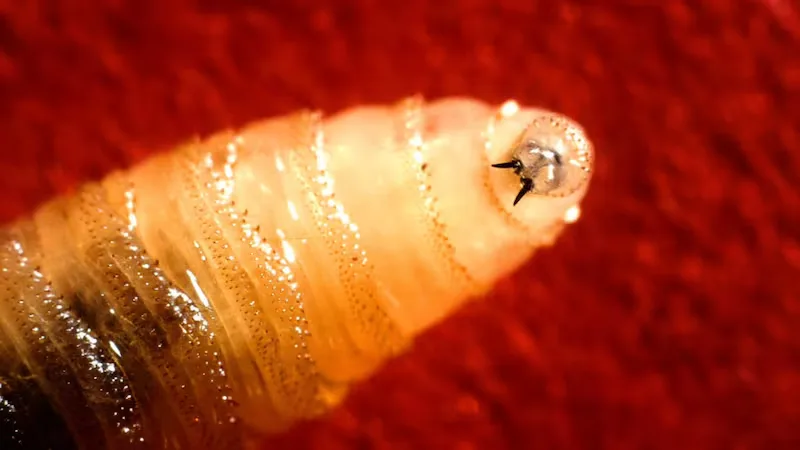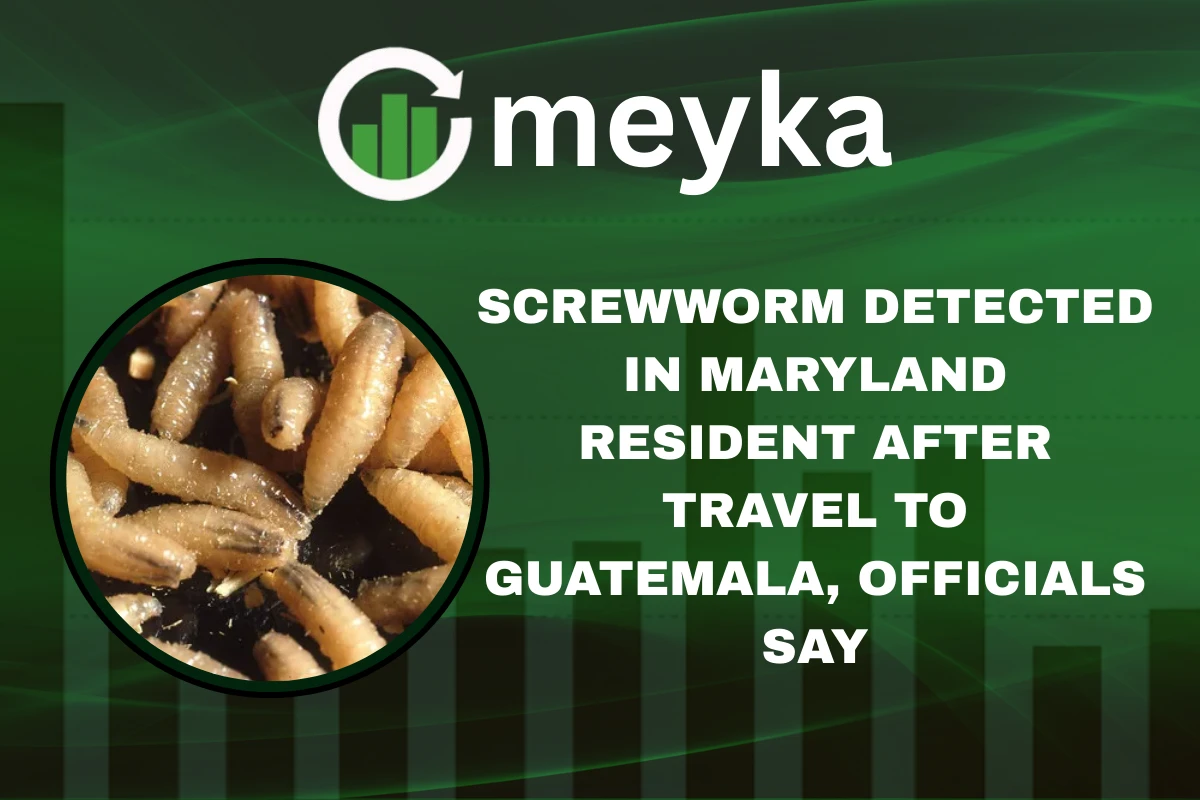Screwworm Detected in Maryland Resident After Travel to Guatemala, Officials Say
Maryland health officials have confirmed the first U.S. case of a human infected with a screwworm, a rare but dangerous parasitic infestation. The patient, a Maryland resident, was diagnosed after returning from a trip to Guatemala, where the parasite is still present. This case has raised concerns among health experts, farmers, and federal agencies, as the United States has been free of screwworm since the 1960s.
What is a Screwworm and Why is it Dangerous

A screwworm is the larva of the New World screwworm fly, a flesh-eating parasite that can infect both humans and animals. Unlike regular maggots, which usually feed on dead tissue, screwworm larvae burrow into healthy flesh, causing painful wounds that can lead to severe infection and even death if untreated. The parasite was eradicated from the U.S. decades ago through a major eradication program, but it remains active in parts of Latin America.
Health experts explained that the parasite’s return, even in a travel-related case, is alarming because it shows the risk of reintroduction through international movement.
Details of the Maryland Case
According to the U.S. Department of Agriculture (USDA) and Maryland health officials, the infected patient developed painful sores after traveling to Guatemala. Upon medical examination, doctors found live screwworm larvae in the wounds. The larvae were identified as Cochliomyia hominivorax, the species responsible for screwworm infestations.
The patient was treated immediately and is now recovering. Officials emphasized that there is no sign of local transmission in Maryland, and the case appears to be linked solely to international travel.
The Reuters Health Desk shared the news on X, writing: “The first U.S. case of human screwworm has been confirmed in Maryland after a patient returned from Guatemala”
How Serious is This Threat
Why is this discovery important? The screwworm poses a major threat not just to human health but also to livestock industries. The parasite can cause devastating losses in cattle, sheep, and other farm animals. In fact, the U.S. spent years eradicating screwworm through a sterile insect release program that was considered a global model for pest control.
Agricultural authorities stressed that protecting U.S. borders from reintroduction is vital. Travelers returning from affected regions are now being urged to seek medical attention if they notice unusual skin wounds or sores that worsen instead of healing.
Public Response and Awareness
The news quickly spread on social media. One user wrote on X: “This is scary, especially knowing how fast screwworm spreads among animals”. This reflects growing public concern about the potential risk to both people and agriculture.
Meanwhile, health agencies have reassured the public that surveillance systems remain strong. Officials highlighted that the rapid detection of this case shows the system is working.
What Are the Symptoms of a Screwworm Infestation
Doctors say symptoms include:
- Painful, enlarging skin wounds
- Visible maggots inside sores
- Foul odor from the wound site
- Fever and discomfort if infection spreads
Immediate medical care is necessary. In many cases, the larvae must be physically removed, and antibiotics may be needed to prevent further infection.
Global Context and Travel Risks
While the U.S. has remained free of screwworm for decades, countries such as Guatemala, Honduras, and parts of South America still report cases. The Centers for Disease Control and Prevention (CDC) advises travelers visiting rural or livestock areas in these regions to take preventive measures, such as covering wounds and using insect repellent.
A recent report from BNO News also highlighted that this is the first U.S. case in decades, underscoring the rarity but seriousness of such infections.
What Are Officials Doing Now
The USDA has confirmed that they are monitoring livestock near the patient’s residence as a precaution, although no secondary cases have been found. Veterinary health checks at farms in Maryland have also shown no signs of the parasite.
The case has triggered renewed discussions about strengthening biosecurity measures, especially as global travel and trade increase the risk of parasites and diseases crossing borders.
Expert Opinion
Agricultural and health experts say that while this case is concerning, it is not yet a sign of widespread danger. They emphasize that early detection prevented a potential outbreak. Still, they stress the importance of public education, especially for people traveling to regions where screwworm remains active.
Dr. Michael Waters, a veterinary parasitologist, said in an interview: “This incident shows how quickly parasites can reappear in places where they were once eliminated. Vigilance is the key to keeping screwworm out of the U.S.”
Conclusion
The screwworm case in Maryland is a reminder of how vulnerable global health systems are to re-emerging parasites. For now, the case appears isolated, and the patient is recovering. But the event highlights the importance of strong surveillance, public awareness, and preventive measures to protect both human health and agriculture.
As officials continue to monitor the situation, travelers are advised to remain cautious, particularly when visiting screwworm-affected countries.
FAQ’S
People get screwworms when flies lay eggs in open wounds, and the larvae burrow into the tissue, feeding on living flesh.
Screwworm disease, also called myiasis, is an infestation caused by screwworm larvae that eat healthy tissue and can lead to severe infections if untreated.
The screwworm burrows into wounds and consumes living flesh, causing extreme pain, infection, and tissue damage.
The New World screwworm (Cochliomyia hominivorax) is a parasitic fly species found in the Americas, dangerous to both humans and animals.
Screwworms in humans are treated with prescribed medicines, wound cleaning, and in some cases, surgical removal of larvae.
Screwworm infestations are extremely painful because the larvae actively feed on living tissue, causing constant irritation and swelling.
It is also called myiasis-causing fly or flesh-eating fly, referring to its larvae that destroy tissue.
Screwworms are not contagious between people but can spread quickly if flies lay eggs in untreated wounds.
Yes, screwworms still exist in parts of South America, the Caribbean, and Africa, though eradication efforts reduced them in North America.
Disclaimer
This is for informational purposes only and does not constitute financial advice. Always do your research.






